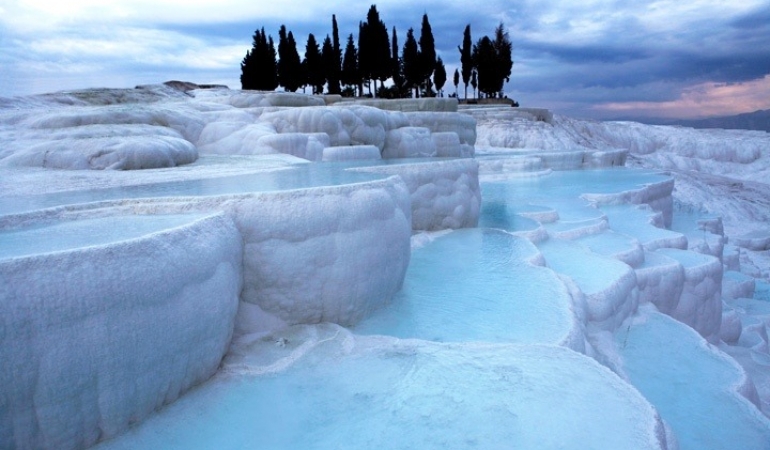
Travertines of Pamukkale

Travertines of Pamukkale
Pamukkale has a very different place for Denizli. This natural wonder place, which is on UNESCO's World Cultural Heritage List, is one of the most valuable places not only for city tourism, but also for country tourism. One of the important features of travertines, which resemble a cotton heap when viewed from afar, is their healing thermal waters.
Thermal health facilities serving in the region play an important role in the treatment of many internal and external diseases.
Thermal waters provide healing in cardiovascular diseases. It is seen to be effective in diseases of the circulatory system, ischemic syndromes in the brain and surrounding arteries, blood pressure changes, bronchial asthma cases, rheumatic syndromes that fall under the osteoarthrosis class and are located especially in the lower extremities, and arthritis syndromes that have passed the acute phase and are in a stabilized state.
How Pamukkale Travertines Formed
Travertines are formed as a result of precipitation of various chemical reactions. It is actually a kind of rock. In the Pamukkale region, there are 17 hot water springs with a temperature of 35-100 degrees in the area where the travertines are located. After this thermal water comes out of the source, it happens to the travertines and starts to precipitate on the floors of the travertines.
When leaving the thermal water source, it is around 35 degrees. There is plenty of Calcium Hydrocarbonate in the water. Carbon Dioxide and Carbon Monoxide fly away when it comes into contact with oxygen after leaving the source. Calcium Carbonate stays behind and begins to precipitate. In fact, it first forms as a gel. It hardens over time to form a rock.
The magnificent image was formed as a result of the precipitation of various chemical reactions. There are about 17 hot water springs in Pamukkale region and the temperatures of these springs vary between 35-100 degrees. This thermal water comes to the top of the travertines immediately after leaving the source and begins to precipitate on the floors of these travertines. When leaving the source, the temperature of the water becomes 35. There is a large amount of Calcium Hydrocarbonate in this water. After leaving the source, Carbon Dioxide and Carbon Monoxide fly when it comes into contact with oxygen. Calcium Carbonate stays behind and begins to precipitate. This formation first consists of gel, as time passes, it hardens and enters the form of rock.
Page update date: 1/Ağustos/2023 21:08
 Türkçe
Türkçe English
English Deutsche
Deutsche
